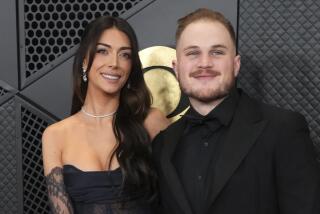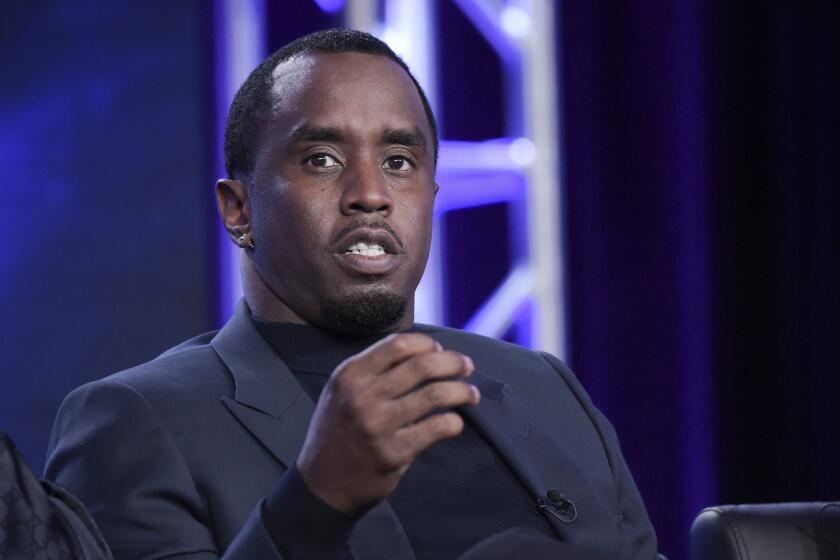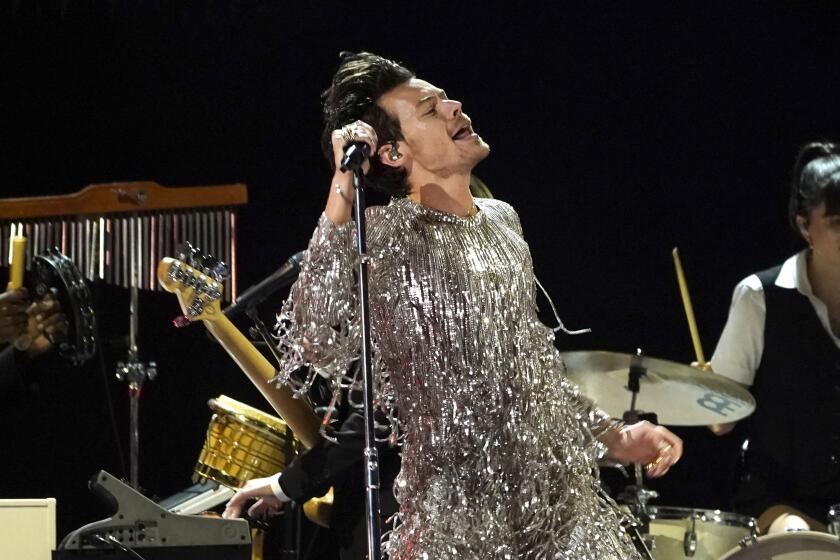UNUSUAL UNION PROVIDES MUSICAL FEAST
When Sun Ra and Phil Alvin appear in concert together Sunday night at the Belly Up Tavern, local pop music audiences will be able to decide for themselves whether mixed musical marriages can work.
Without question, it’s a pretty bizarre pairing.
Sun Ra, a pianist, composer and bandleader whose career dates to the 1940s, has long been one of the leading figures in avant-garde jazz. His music is boundless; it is wholly improvisational and highly complex.
Alvin, a guitarist and the leader of rockabilly revival band the Blasters, wasn’t even born in the 1940s. His music is bound by the narrow framework of guitar, bass and drums; it is tightly structured and extremely simple.
But late last year, the two put aside their musical differences to record an album, “ ‘Un’ Sung Stories,” with several of the backing tracks provided by Sun Ra’s 14-piece “Arkestra.”
“I was playing the Cabaret in Philadelphia, and one night he came in and saw me,” Sun Ra said, explaining how the unlikely union originated.
“After the show, he told me he wanted me to play on his next solo album. I wasn’t surprised in any sense; he told me his soul was full of the black man, and that he wanted to do something similar to Cab Calloway.
“He said he considered me one of the few people around who could still play ‘hot’ jazz the way it should be played, and that’s why he had come to me.
“He seemed to know exactly what he was talking about, so I accepted.”
Opposites might attract in affairs of the heart, but they generally don’t in the world of popular music.
In the middle 1970s, punk-rock entrepreneur Kim Fowley produced a couple of albums for balladeer Helen Reddy.
A few years later, David Bowie teamed up with Bing Crosby for a Christmas single, “The Little Drummer Boy.”
Neither association lasted very long. When Reddy’s record sales plummeted, Fowley was given the boot. As soon as the holiday season was over, Bowie went back to dyeing his hair orange and Crosby returned to the golf course.
With Sun Ra and Alvin, the marriage promises to be a long one. Instead of clashing, their contrasting styles meshed into a harmonic hybrid that calls to mind the vintage “hot” jazz of Calloway, Fats Waller and the early Duke Ellington--the syncopated blend of urban jazz and rural blues and country.
Sun Ra, who had helped define the future of jazz, took a break and rediscovered his roots. Alvin, accustomed to looking back, simply looked back a few decades further.
“Working together in the studio, two different experiences and two types of minds became one,” Sun Ra said. “The entire session, I stayed behind my piano for 16 hours at a time.
“I didn’t drink nothing, I didn’t go to the bathroom--I just played with feeling, giving his band and mine the chance to blend together and really feel out what he wanted.”
Sun Ra added that, despite the traditional nature of the music, he consistently employed elements of the avant-garde school of playing he had helped develop after breaking with renowned Big Band pianist-bandleader Fletcher Henderson in the early 1950s.
“I don’t teach musicians to play trumpets and pianos and tenor saxophones; I teach them to play instruments,” Sun Ra said. “This way, if I want a different sound, I can get it, without the players worrying whether that sound is right for the trumpet, or the piano, or the tenor sax.
“I can get any sound from any instrument; I can even play in all keys at the same time, and it still sounds wonderful. The key is improvisation.
“Even if nobody knows what to play next, it all comes out coordinated and natural, because I’m into the spirit of music, not the notes. And the spirit is what attracts the people.”
So far, Sun Ra said, both the album and the shared concert dates with Alvin have gone over so well that he plans to continue diversifying his musical exploits.
“The other night in Santa Cruz, the people were all yelling for me to play some ‘wild and crazy Sun Ra stuff,’ ” Sun Ra said. “So I had to play it.
“But to me, music is a language that changes all the time. Through music, I can express the past, present and future, as well as all the things that should have been, but never were.
“As a result, I never play the same thing twice. In concert, I go off into a lot of different directions with things I’ve never played before.
“That’s creative art; that’s improvisation to the max, I would say.”
More to Read
The biggest entertainment stories
Get our big stories about Hollywood, film, television, music, arts, culture and more right in your inbox as soon as they publish.
You may occasionally receive promotional content from the Los Angeles Times.






